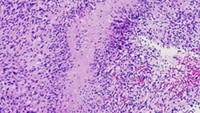Advertisement
Grab your lab coat. Let's get started
Welcome!
Welcome!
Create an account below to get 6 C&EN articles per month, receive newsletters and more - all free.
It seems this is your first time logging in online. Please enter the following information to continue.
As an ACS member you automatically get access to this site. All we need is few more details to create your reading experience.
Not you? Sign in with a different account.
Not you? Sign in with a different account.
ERROR 1
ERROR 1
ERROR 2
ERROR 2
ERROR 2
ERROR 2
ERROR 2
Password and Confirm password must match.
If you have an ACS member number, please enter it here so we can link this account to your membership. (optional)
ERROR 2
ACS values your privacy. By submitting your information, you are gaining access to C&EN and subscribing to our weekly newsletter. We use the information you provide to make your reading experience better, and we will never sell your data to third party members.
Biological Chemistry
New Compound Corrects Badly Behaved RNA
Targeting RNA: Small molecule binds to trinucleotide repeats associated with Huntington’s disease
by Olga Kuchment
January 26, 2012

In diseases such as Huntington’s, myotonic dystrophy, and Fragile X syndrome, repeating nucleotide sequences cause cell-wide havoc by gumming up RNA processing. As a result, chemists would like to develop drugs to silence these nucleotide stutters. Unfortunately, designing small molecules to bind specific RNA sequences is tough. Now researchers have identified one of the first compounds that can prevent RNA processing errors in cells by binding a specific RNA repeat sequence. (ACS Chem. Biol., DOI: 10.1021/cb200413a).
Unlike proteins, RNAs are very flexible and packed with negative charge. Both characteristics tend to thwart chemists’ desire to develop small molecules that bind tightly to specific sequences. When designing compounds to target ribosomal RNA, researchers can start from crystal structures of known molecules bound to the nucleic acids. But no such information exists for most messenger RNA sequences.
Matthew D. Disney, a chemist at the Scripps Research Institute in Jupiter, Fla., and his colleagues wanted to find compounds that could bind a repeating CAG trinucleotide sequence associated with Huntington’s disease. This repeat causes the RNA to fold into a structure that binds to an RNA-processing protein called muscleblind-like 1. When multiple copies of muscleblind-like 1 glom onto the repeats, the cell’s machinery can’t process RNA correctly.
To find small molecules that would bind the CAG repeat and thereby block the processing protein from attaching, the researchers first tested whether molecules known to interact with nucleic acids would recognize CAG. Those tests pointed to a molecule
called 4’,6-diamidino-2-phenylindole. But when the chemists tested the molecule on human cell lines, they found it killed all the cells.
So Disney’s team next searched for molecules that were similar in shape and electrostatics in the National Cancer Institute’s 250,000-compound library. Of the nine best matches, only one, 4-guanidinophenyl 4-guanidinobenzoate, could selectively bind CAG repeats and did not kill human cells even in high concentrations. It was also the most potent inhibitor of muscleblind-1 binding. When the scientists applied the molecule to connective tissue cells with the Huntington’s disease mutation, they found that RNA processing errors disappeared.
Steven C. Zimmerman, of the University of Illinois, Urbana-Champaign, calls the discovery promising: “Finding compounds that bind oligonucleotides is easy, but finding agents that are selective is difficult.” He says that the researchers’ screen could help design ligands for other RNA targets.





Join the conversation
Contact the reporter
Submit a Letter to the Editor for publication
Engage with us on Twitter